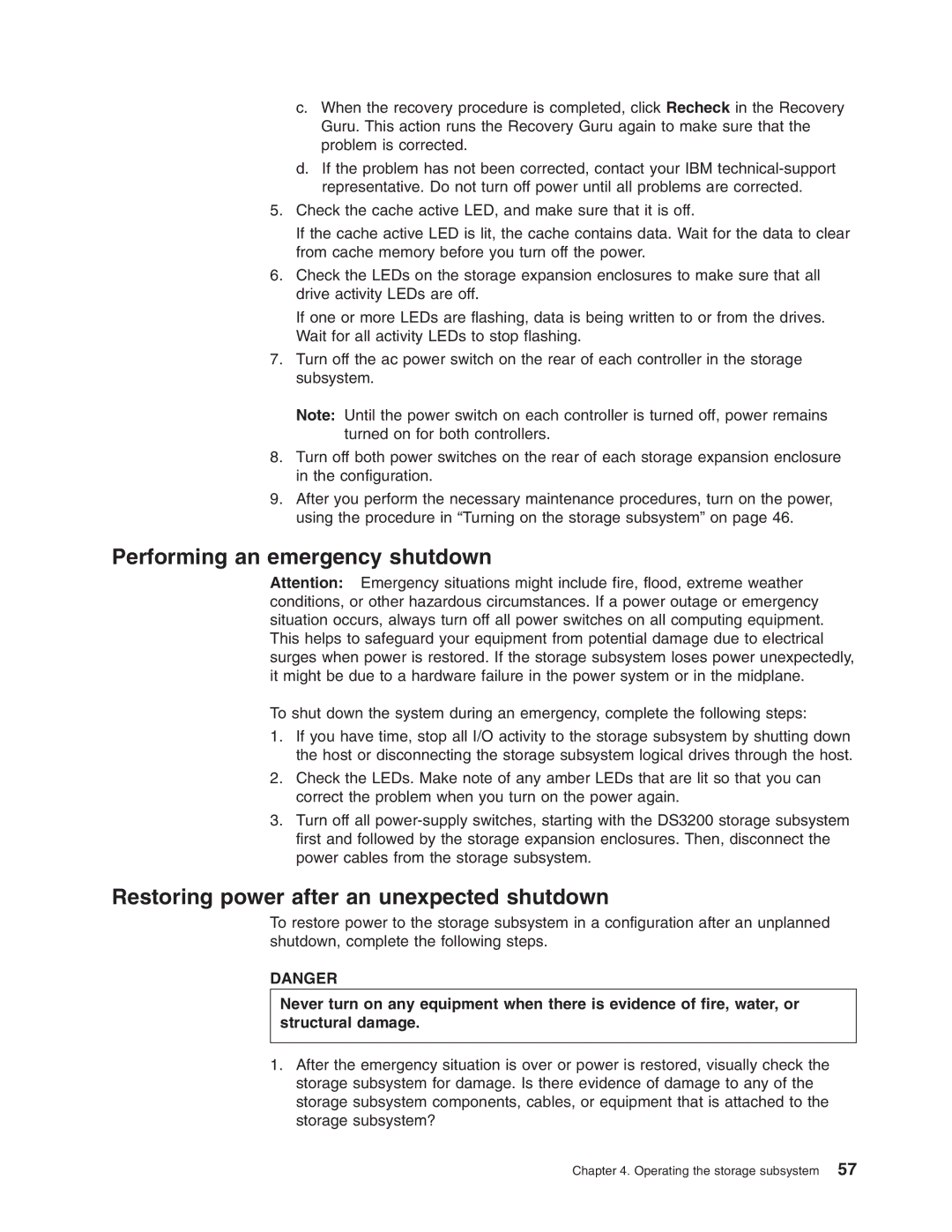c.When the recovery procedure is completed, click Recheck in the Recovery Guru. This action runs the Recovery Guru again to make sure that the problem is corrected.
d.If the problem has not been corrected, contact your IBM
5.Check the cache active LED, and make sure that it is off.
If the cache active LED is lit, the cache contains data. Wait for the data to clear from cache memory before you turn off the power.
6.Check the LEDs on the storage expansion enclosures to make sure that all drive activity LEDs are off.
If one or more LEDs are flashing, data is being written to or from the drives. Wait for all activity LEDs to stop flashing.
7.Turn off the ac power switch on the rear of each controller in the storage subsystem.
Note: Until the power switch on each controller is turned off, power remains turned on for both controllers.
8.Turn off both power switches on the rear of each storage expansion enclosure in the configuration.
9.After you perform the necessary maintenance procedures, turn on the power, using the procedure in “Turning on the storage subsystem” on page 46.
Performing an emergency shutdown
Attention: Emergency situations might include fire, flood, extreme weather conditions, or other hazardous circumstances. If a power outage or emergency situation occurs, always turn off all power switches on all computing equipment. This helps to safeguard your equipment from potential damage due to electrical surges when power is restored. If the storage subsystem loses power unexpectedly, it might be due to a hardware failure in the power system or in the midplane.
To shut down the system during an emergency, complete the following steps:
1.If you have time, stop all I/O activity to the storage subsystem by shutting down the host or disconnecting the storage subsystem logical drives through the host.
2.Check the LEDs. Make note of any amber LEDs that are lit so that you can correct the problem when you turn on the power again.
3.Turn off all
Restoring power after an unexpected shutdown
To restore power to the storage subsystem in a configuration after an unplanned shutdown, complete the following steps.
DANGER
Never turn on any equipment when there is evidence of fire, water, or structural damage.
1.After the emergency situation is over or power is restored, visually check the storage subsystem for damage. Is there evidence of damage to any of the storage subsystem components, cables, or equipment that is attached to the storage subsystem?
Chapter 4. Operating the storage subsystem 57
